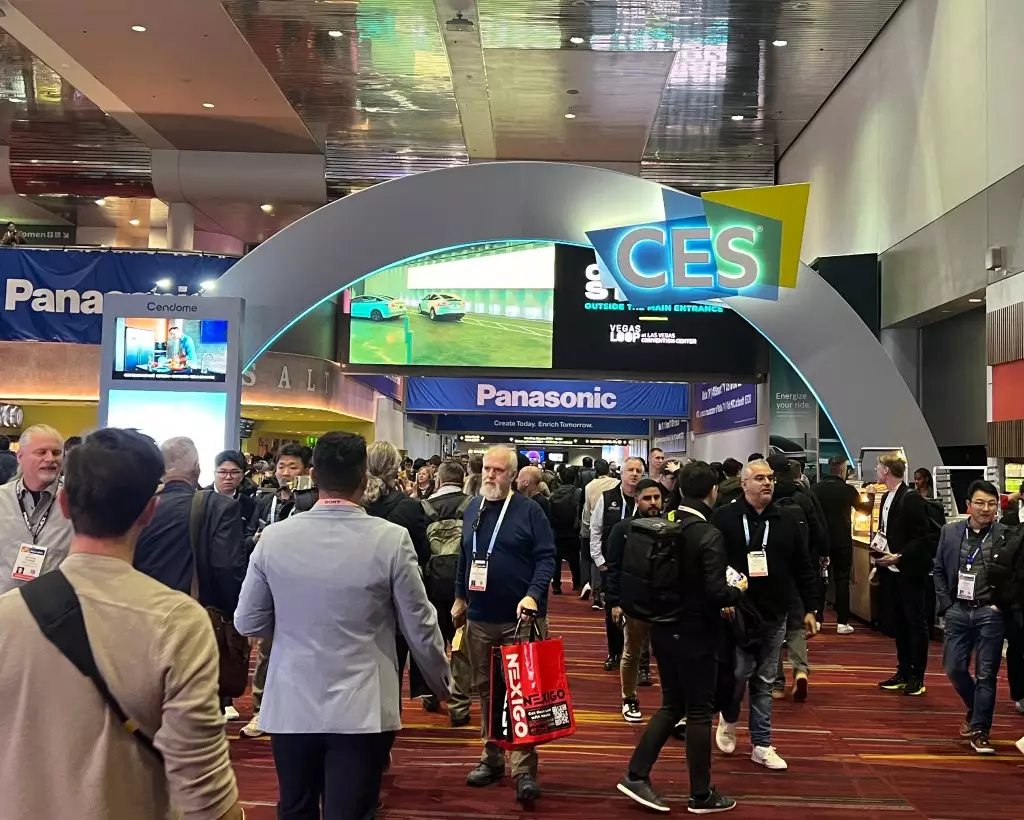With every passing year, the Consumer Electronics Show (CES) solidifies its reputation not only as a pivotal event for showcasing the latest gadgets but also as a vibrant crossroads for the entertainment industry. As the 2023 edition unfolds in Las Vegas amid an accelerated urgency, traditional media giants are keenly aware of the pressing need to evolve alongside their tech counterparts. This year, the confluence of technology and media is particularly pronounced, driven by significant transformations in audience behavior and media consumption.
In recent years, the entertainment sector has been grappling with considerable challenges. From dwindling theatrical box office numbers to declining viewership in linear television, traditional media is under strain. This landscape has led to a wave of layoffs, further thinning the workforce and creating a climate of apprehension among industry players. Interestingly, this backdrop may provide a glimmer of hope as technology firms, with their innovative solutions and disruptive potential, emerge as partners rather than mere competitors. Companies like Sony and Panasonic, alongside major studios like Disney and Warner Bros. Discovery, adorn the CES stage with expansive booths emphasizing a collaborative spirit.
However, it is the tech powerhouses like Nvidia, boasting a staggering market cap of $3.5 trillion, that underscore a crucial pivot within the entertainment landscape. While Nvidia has historically been seen as a supplier of hardware, its recent advancements in artificial intelligence (AI) have become essential to the realms of animation and special effects, reshaping how stories are told on screen. This shift signifies a new chapter where tech innovation and creative artistry converge.
High-profile keynotes scheduled at CES provide insight into the industry’s future trajectory. Industry stalwarts such as the CEOs of SiriusXM and Nvidia deliver compelling narratives about the fusion of creativity and technology. Amidst these discussions, former Quibi CEO Jeffrey Katzenberg returns to discuss the potency of data-driven audience engagement at OpenAP’s Audience Summit. This half-day gathering will highlight the role of data in navigating the streaming landscape, showcasing the challenges and opportunities that come with it.
Among the noteworthy discussions, the impact of advertising on the evolving media ecosystem cannot be overlooked. Traditional advertising spend is progressively migrating to digital formats, leading to a recalibration of how companies like NBCUniversal frame their marketing strategies. Mark Marshall from NBCU aptly noted that CES acts as a launching pad for upfront conversations, tackling upcoming programming and audience engagement strategies that are vital for the company as it approaches its centennial in 2026.
The Strategic Importance of Partnerships
The evolving landscape enforces a culture of collaboration tailored to the modern demands of media consumption. Companies are leveraging CES as a venue for forging strategic partnerships that can drive their futures. NBCUniversal is prioritizing big events—like the upcoming Super Bowl and the Milan Cortina Winter Olympics—as cornerstone components of its strategy to entice advertisers looking to invest in captivating content. The creation of memorable viewing experiences is now more crucial than ever.
On a parallel front, Disney is creating ripples through its Global Tech + Data Showcase, which serves as its platform for unveiling innovations while making its mark during CES. President Rita Ferro emphasizes their competitive edge by emphasizing technology’s differentiating power in meeting ever-evolving audience expectations. The sheer scale of Disney’s content offerings, particularly in sports and popular franchises, positions them favorably amidst competition with both longstanding broadcasters and emerging technology platforms.
Advertising continues to be a pivotal focus at CES, with discussions centering on how digital and streaming platforms must adapt to retain audience attention. Insights from analysts reflect a growing optimism in this domain, with signs of improvement recognized in the advertising value chain. The change is particularly salient for organizations like SAG-AFTRA, which recognizes the importance of technology through its annual LIT Conference, advocating for a harmonious relationship between labor rights and technological progress.
As industries converge at CES, the key takeaway is a prevailing sense of adaptability that characterizes both technology and entertainment. The integration of artificial intelligence, audience analytics, and creative storytelling collectively offers a pathway for both sectors to not only survive but thrive in this rapidly evolving marketplace. It remains to be seen how these partnerships will shape the future of media, but one thing is clear: the dialogue between tech giants and traditional media will play a transformational role in crafting new narratives in the entertainment landscape.

